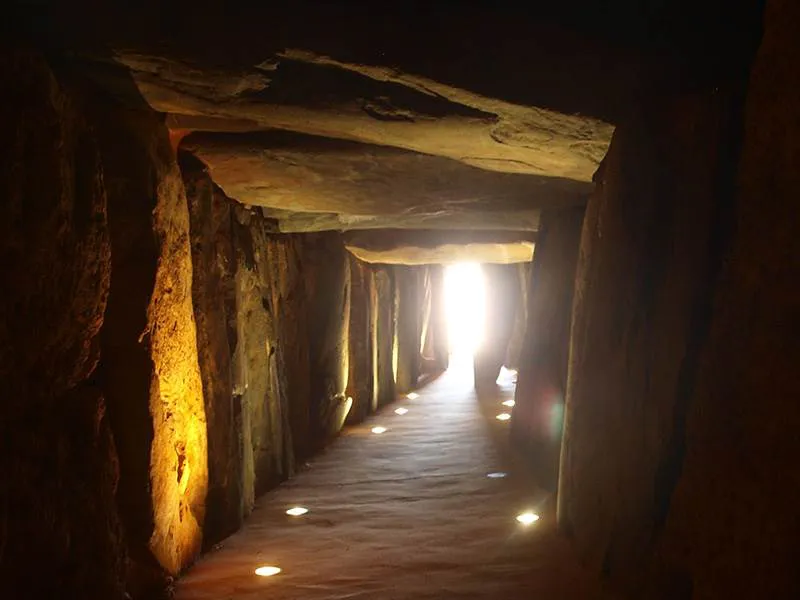The Dolmen de Soto, dating from between 3000 and 2500 BC, is a remarkable megalithic monument that belongs to a family of dolmens known as long-corridor dolmens.

One of its most impressive features is its size, with a height of 21 meters. It is the largest dolmen found in the province of Huelva, Spain. The width of the dolmen varies depending on the area. Near the door, it is about 0.8 meters wide, while in the chamber section it is over three meters wide.

The Dolmen de Soto is one of the most important megalithic monuments in the southwest of the Iberian Peninsula. It was discovered by Armando de Soto Morillas in 1922, when he was planning to build a new house on his property. Excavations at the site began that same year, and in 1924, Hugo Obermaier, a renowned paleontologist of the time, was invited to conduct further research. During the excavations, Obermaier discovered eight bodies buried in the fetal position, accompanied by artifacts. He later published a book describing the results of the excavation and the characteristics of the burial site.

One of the most notable construction features of the Dolmen de Soto is its orientation to the east, aligned with the sunrise on the spring and autumn equinoxes. This construction intention reveals two crucial aspects related to astronomical observation and the ritual use of the site. On the one hand, it demonstrates the need to control the cycles of nature and the seasons, since these agricultural communities depended on agriculture and animal husbandry to survive. On the other hand, it reflects the idea of rebirth, regeneration and spiritual purification rooted in the belief system of these societies.

Another significant feature of the Dolmen de Soto is the presence of cave art. Most of the vertical blocks and roof slabs are covered with engravings, identified as megalithic art typical of the south of the Iberian Peninsula. These engravings were inscribed into the stone using incision and abrasion techniques, resulting in paintings with a variety of motifs.

The Dolmen de Soto represents a fascinating testimony to the region’s remote past, allowing us to understand the ritual practices, beliefs and lifestyle of the prehistoric communities that built it. Its archaeological and cultural importance makes it a site of great interest for researchers and visitors who wish to explore the deep roots of human history.




